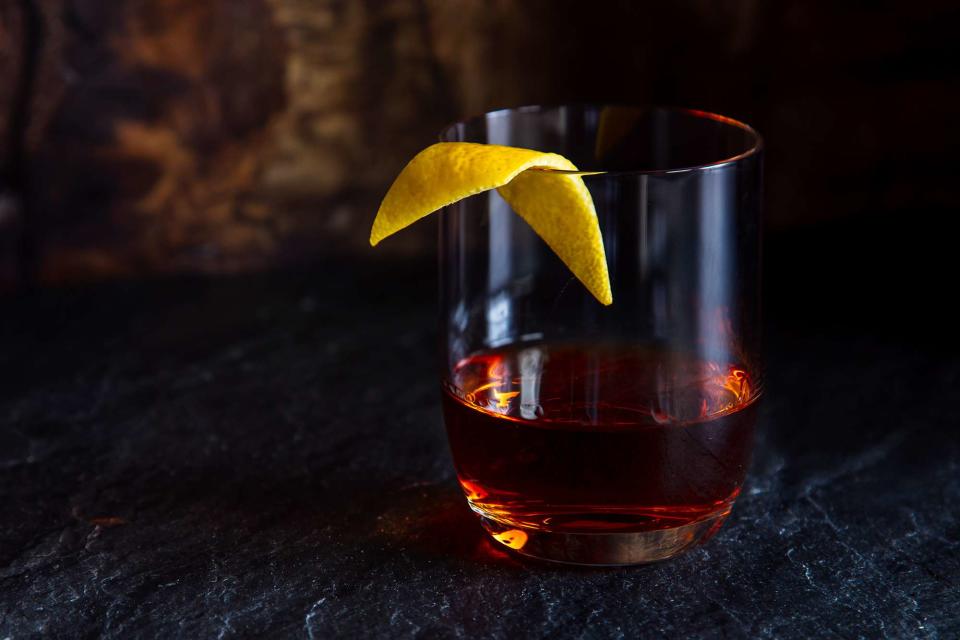We Can't Stop Using This Simple Trick for Batching Cocktails
Coconut water isn't just for hydrating, it's also a key component of our new favorite party trick.

Matt Taylor-Gross / Food Styling by Lucy Simon
Whether we’re hosting a few friends or a larger gathering for the holidays, there are a few tricks we’ve come to rely on to make the experience as seamless as possible for all involved. That might look like upgrading store bought hors d'oeuvres with the help of a little herb butter or seasoning, or setting out a charcuterie board for guests to pick at as soon as they’ve hung up their coats. When it comes to making consistent, balanced cocktails, we’re turning to the bartender-approved trick of adding coconut water for diluting classic drinks while adding an unexpected (but very welcome) kick of flavor.
If you’re wondering why diluting a cocktail is necessary in the first place, the answer has to do with ice, or more precisely, the absence of ice from a pre-batched drink. Let’s say you’re making a Negroni. Once you determine how many servings you’d like to make, multiply the quantity of necessary ingredients (in this case, that’s gin, Campari, and vermouth) by that serving size. You’ll then add a percentage of that total liquid volume in water or coconut water (25 — 35% is a good rule of thumb, though levels vary by cocktail) to compensate for the rate at which ice melts and dilutes a drink that isn’t pre-batched. Without this dilution, your pre-batched Negroni or Manhattan will taste stronger or more bitter than what you’re used to.
Related: How to Make Balanced, Large-Batch Cocktails for a Crowd
“When you batch and dilute a cocktail to a certain percentage, quite frankly, there’s less margin for error than when you’re making it on the spot,” explains Tony Milici, general manager at Hellbender Nighttime Café, a new concept set to open this January from the teams behind Rolo’s, a neighborhood restaurant in Ridgewood, Queens, and Radio Bakery in Brooklyn. While many bartenders dilute classic cocktails like a Sazerac or Manhattan with regular water to mimic the role of melting ice, Milici and the Hellbender crew lean on coconut water, a critical choice he likens to a chef’s decision between using tap water and stock. “You need liquid to expand a recipe, and nine out of 10 times, a chef will reach for chicken stock or vegetable stock over tap water,” he notes.
The addition of coconut and rum makes for a more tropical twist on the Sazerac, which Milici calls a classic “boozehound’s drink,” and plays especially well with the traditional elements of Cognac or rye whiskey. At Hellbender Nighttime Café, the Sazerac (lovingly referred to on the menu as “the Cocorac”) has a 25% dilution rate, where coconut water replaces regular tap water.
It's a trick that also works well to batch a Manhattan cocktail. Milici builds this combination of rye, vermouth, and bitters in a squeeze bottle (though any vessel will do), and adds coconut water to achieve a 25% dilution rate. The bottles can rest in the freezer (or fridge) until guests arrive, and be served without re-shaking.
“There are a million factors that can go into changing how a cocktail comes out,” Milici says. “This is a bullet-proof way to make them the same every time.”
For more Food & Wine news, make sure to sign up for our newsletter!
Read the original article on Food & Wine.


